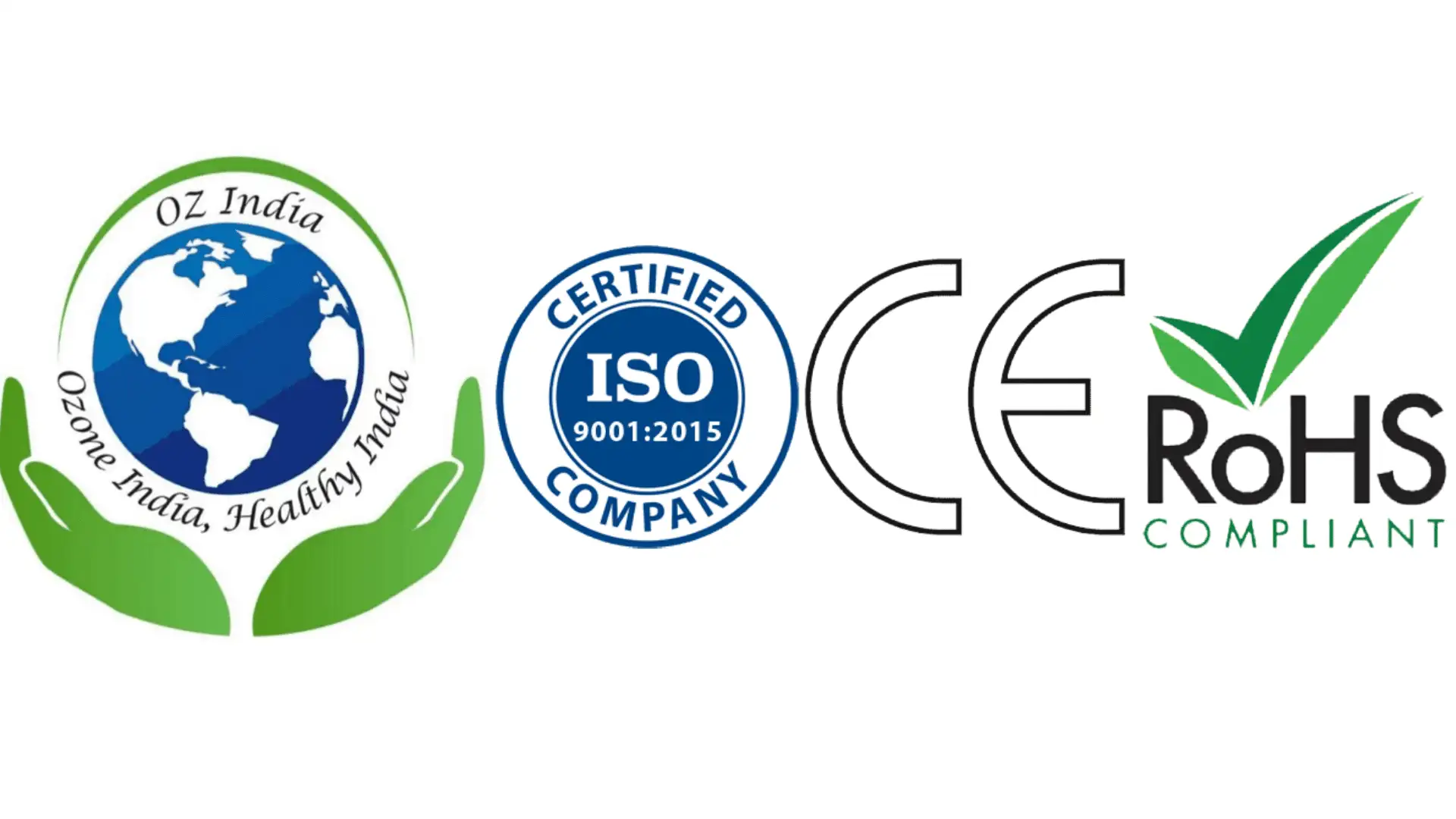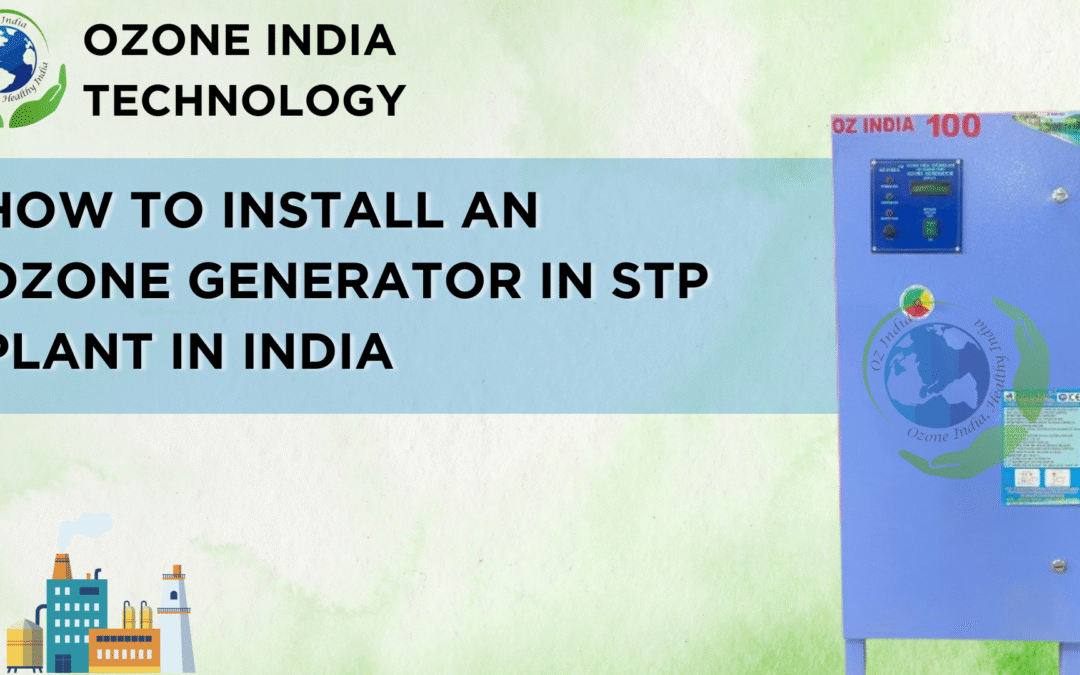How to install an ozone generator in a Sewage Treatment Plant (STP) is an advanced and eco-friendly method to enhance water quality and meet strict discharge norms. Ozone (O₃) is a powerful oxidizing agent that effectively removes color, odor, bacteria, and residual organic matter from treated sewage water. In India, where wastewater management regulations are becoming increasingly stringent, integrating ozone technology in STPs has become a preferred choice for industries, hotels, and residential complexes aiming for sustainable and high-quality water reuse.
The process of install an ozone generator requires a clear understanding of both the technical setup and safety protocols. The system typically includes components such as the ozone generator, oxygen concentrator or air feed unit, contact tank, diffuser, and off-gas destructor. Each of these parts plays a specific role in ensuring efficient ozone production, transfer, and utilization. Proper sizing and placement are essential for achieving the desired disinfection and oxidation efficiency without energy wastage or ozone leakage.
Before installation, it’s important to assess the characteristics of the wastewater, including its Chemical Oxygen Demand (COD), Biological Oxygen Demand (BOD), and flow rate. These parameters help determine the ozone dosage required for effective treatment. For instance, a higher COD load may require a generator with a greater ozone output capacity. Similarly, the layout of the STP and available infrastructure — such as air supply, electrical connections, and ventilation — must be considered during system design to ensure smooth integration.
In India, following Central Pollution Control Board (CPCB) and State Pollution Control Board (SPCB) guidelines is essential during installation and operation. Compliance not only ensures environmental safety but also prevents potential penalties for non-adherence. Moreover, proper training of plant operators, regular maintenance schedules, and installation by certified professionals further enhance the efficiency and longevity of the ozone system. By following these steps carefully, even a beginner can successfully oversee the setup of an ozone generator in an STP and achieve consistent, odor-free, and high-quality treated water.
Understanding the install an ozone generator in STP Applications
What is Ozone and Why Use it in STPs?
Ozone (O₃) is a powerful oxidizing agent that serves multiple purposes in sewage treatment plants. In India, ozone usage in STPs is particularly important for two main applications:
- Tertiary disinfection – replacing chlorine for safer water treatment
- Exhaust odor control – mandatory for basement STPs as per Indian Pollution Control Board regulations
The chemical reactions involved are:
- H₂S + O₃ → SO₂ + H₂O (hydrogen sulfide oxidation)
- 2 NH₃ + 4 O₃ → NH₄NO₃ + 4 O₂ + H₂O (ammonia oxidation)
Essential Components of Ozone Generator System
The install an ozone generator system for STP applications is a sophisticated assembly of interconnected components, each serving critical functions in the safe and effective production, delivery, and monitoring of ozone for sewage treatment applications. Understanding these components in detail is essential for proper system design, installation, and operation.
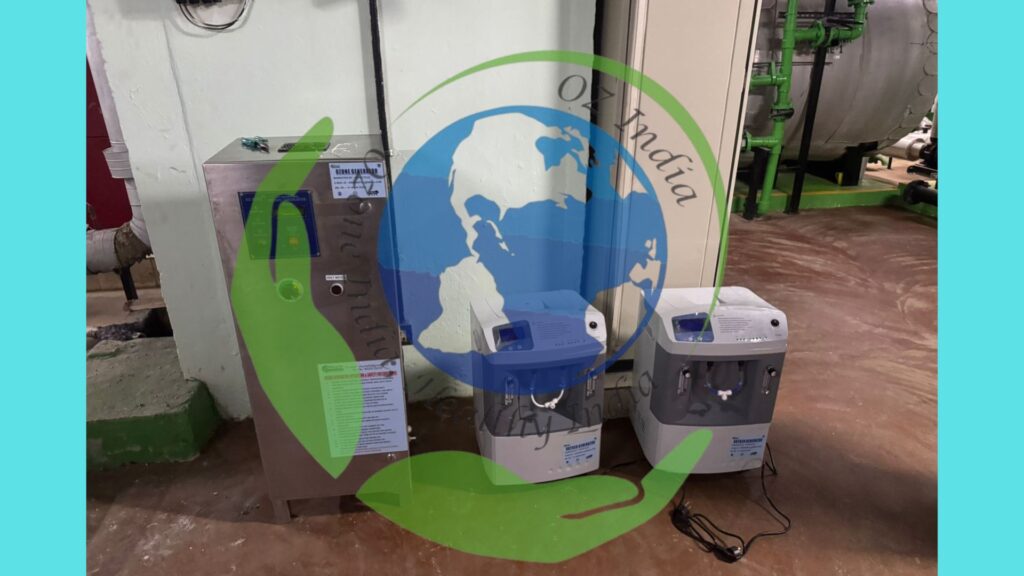
Primary Generation Components
The install an ozone generator unit represents the heart of the entire system, utilizing advanced corona discharge technology to convert oxygen molecules into ozone. The core component consists of high-voltage corona discharge cells constructed from either stainless steel or aluminum materials, featuring specially designed electrodes that create the electrical discharge necessary for ozone formation. These cells are housed within dielectric tubes made from high-quality quartz or ceramic materials that can withstand the intense electrical fields and corrosive ozone environment.
The electrical system includes a high-frequency inverter utilizing IGBT-based resonant converter technology that provides the precise voltage control necessary for optimal ozone production efficiency. Modern units incorporate pressure-compensated ozone production (PCOP) systems that automatically adjust power output to maintain consistent ozone generation despite variations in feed gas pressure, typically operating within ranges of 5-20 PSIG, 40-60 PSIG, or 70-85 PSIG.
The feed gas preparation system is crucial for maintaining optimal ozone generation efficiency and equipment longevity. This system includes either oxygen concentrators capable of producing 90-95% pure oxygen from ambient air, or compressed air systems with appropriate filtration for air-fed applications. The feed gas must pass through multi-stage filtration systems including moisture separators, oil filters, and particle filters to remove contaminants that could damage the corona discharge cells or reduce ozone production efficiency. Pressure regulation equipment maintains consistent feed gas pressure, typically at 40 PSI inlet pressure for optimal performance. Flow control mechanisms ensure proper gas flow rates through the ozone generation cells, with precise measurement capabilities for process monitoring.
Ozone Delivery and Contact Systems
The ozone injection system varies significantly depending on the application – whether for water treatment or exhaust air treatment. For water treatment applications, the system includes venturi injectors constructed from ozone-compatible materials such as stainless steel or specialized plastics, designed to create the vacuum necessary for drawing ozone gas into the water stream. Static mixers provide additional turbulence and contact time to maximize mass transfer efficiency between ozone and water. The system incorporates ozone-compatible piping constructed from materials such as 316L stainless steel that can withstand ozone’s corrosive properties. Contact tanks are sized to provide adequate contact time, typically 1.5-2.0 times peak flow capacity for water treatment applications.
For exhaust air treatment in STPs, the injection system includes ozone manifolds designed for even distribution of ozone throughout the exhaust air stream. Injection points are strategically located at the entry point of exhaust air ducts to ensure optimal mixing and contact time. The system must provide minimum contact times of 1.5-2 seconds for effective odor compound oxidation. Mixing chambers constructed from corrosion-resistant materials facilitate proper ozone-air contact for maximum treatment efficiency.
Critical Safety and Monitoring Equipment
Ambient ozone monitoring systems represent one of the most critical safety components of any ozone installation. These systems utilize various sensor technologies including metal oxide semiconductor (MOS) sensors for general monitoring applications, electrochemical (EC) sensors for industrial applications requiring rapid response times, and reference-grade monitors for precise regulatory compliance monitoring. The monitoring systems feature detection ranges typically from 0-50 ppm with auto-ranging capabilities, digital displays with backlight functionality for easy reading, and alarm systems providing both visual and audible warnings when ozone concentrations exceed safety limits. OSHA compliance features include automatic alarm activation at 0.1 ppm safety limits, with data logging capabilities for regulatory compliance documentation.
Ozone destruct systems are mandatory safety components designed to safely neutralize excess ozone before venting to atmosphere. These systems utilize several technologies including catalytic destructors employing palladium/alumina or manganese dioxide catalysts that decompose ozone to oxygen at approximately 50°C. Thermal destructors heat off-gases to temperatures above 350°C for at least five seconds to achieve complete ozone decomposition. UV destructors utilize 254 nm wavelength ultraviolet radiation for ozone decomposition, particularly effective at temperatures below 0°C. Granular activated carbon (GAC) systems provide an alternative destruction method, converting ozone to carbon dioxide and some carbon monoxide through catalytic reaction.
Advanced Control and Integration Systems
Centralized control systems integrate all install an ozone generator components through sophisticated programmable logic controllers (PLCs) with human-machine interface (HMI) capabilities. These systems provide real-time monitoring of all critical parameters including ozone production rates, feed gas flow, system pressures, and ambient ozone levels. Variable ozone control allows adjustment of ozone output based on demand, typically through modulating power supplies that can adjust corona discharge intensity. Emergency shutdown systems provide multiple redundant safety mechanisms including manual emergency stops, automatic shutdown triggers based on safety sensor inputs, and system purging capabilities to safely clear ozone from all system components.
Data acquisition systems continuously monitor and record all system parameters for regulatory compliance and operational optimization. These systems typically include touchscreen interfaces for operator interaction, trending capabilities for performance analysis, and alarm management systems with configurable setpoints and notification protocols. Remote monitoring capabilities allow for off-site system supervision and diagnostics through ethernet connectivity and web-based interfaces
Safety and Monitoring Equipment
1. Ambient Ozone Monitors
Essential safety components including:
- Detection range: 0-50 ppm with auto-ranging capability
- Display: Large digital display
- Alarm systems: Audio alarms for safety limits
- Power requirements: 12-24 VDC operation
2. Ozone Destruct System
Required for safe operation:
- Catalytic destructors – convert excess ozone to oxygen
- Thermal destructors – for high-concentration applications
- Vent systems – safely discharge treated off-gases
3. Emergency Equipment
- Emergency shutdown switches – accessible locations
- Breathing apparatus – for emergency response
- First aid equipment – specific to ozone exposure
- Evacuation route marking – clearly marked emergency exits
Electrical and Control Systems
The control panel of an install an ozone generator system serves as the central hub for managing and monitoring the entire operation within an STP setup. It includes a centralised control system that integrates all essential components such as the ozone generator, oxygen feed system, and cooling units to ensure synchronized performance. The panel is equipped with non-resettable hour meters for continuous monitoring of equipment run-time, helping operators track maintenance intervals and operational efficiency. Additionally, a variable ozone control feature allows users to adjust ozone output according to treatment demand, ensuring optimal usage of power and gas resources while maintaining desired disinfection levels.
In terms of power supply requirements, smaller ozone generator units typically operate on single-phase 230V, 50Hz supply, while larger industrial systems used in STPs require a three-phase 415V, 50Hz connection. The power consumption of the system generally ranges between 7–14 kWh per kilogram of ozone produced, depending on the type of feed gas used (either dry air or oxygen). Since ozone systems operate in humid and potentially corrosive environments, all electrical enclosures and panels must have a minimum of IP-55 protection rating to safeguard against dust, moisture, and electrical hazards, ensuring reliable and safe operation within sewage treatment facilities.
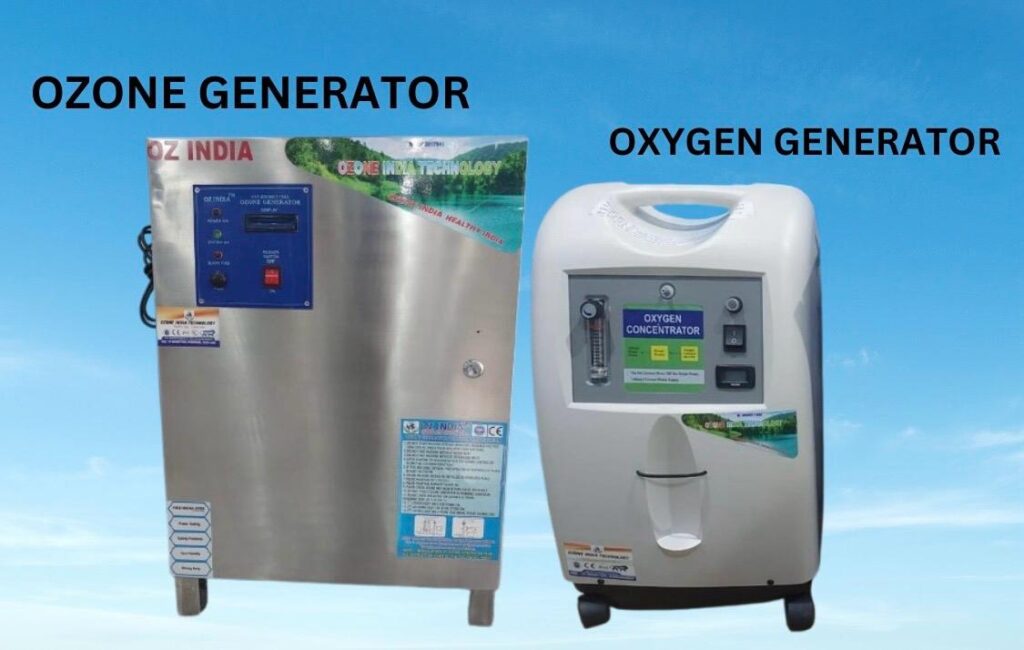
Detailed Installation Process of Ozone Generator
The installation of an install an ozone generator system for STP applications requires meticulous planning, precise execution, and adherence to strict safety protocols throughout all phases of the project. The complexity of these installations demands experienced personnel and careful coordination of multiple technical disciplines.
Comprehensive Pre-Installation Phase
The installation process begins with an extensive site assessment that must evaluate multiple critical factors affecting system design and placement. Structural analysis determines the load-bearing capacity of floors and walls to support ozone generation equipment, which can weigh several hundred kilograms for larger industrial units. Environmental conditions assessment includes evaluation of ambient temperature ranges, humidity levels, and ventilation requirements, as ozone generators require controlled environments with temperatures maintained between 20°C and 30°C year-round. Electrical infrastructure evaluation must confirm availability of appropriate power supplies, typically requiring 220-440V, 50Hz single or three-phase power depending on system capacity.
Space planning must account for adequate clearances around equipment for maintenance access, with minimum requirements of 1.8-2.2 meters height for wall-mounted units and sufficient space for cooling system operation. Ventilation assessment is critical, as installations require positive ventilation with exhaust capabilities to prevent ozone accumulation in equipment rooms. Safety zone planning establishes restricted access areas and emergency evacuation routes, with consideration for ozone leak scenarios and emergency response procedures.
Regulatory compliance verification ensures all installations meet local and national standards including Central Pollution Control Board (CPCB) requirements for STP installations, Bureau of Indian Standards (BIS) guidelines for equipment certification, and OSHA safety standards for ozone exposure limits. Permit acquisition includes obtaining necessary approvals from municipal authorities, pollution control boards, and electrical inspection agencies.
Critical Equipment Installation Procedures
Mechanical installation begins with precise positioning of the ozone generator unit according to manufacturer specifications and safety requirements. The unit must be located in a well-ventilated area, minimum 5 feet away from any combustible materials or heat sources, and positioned to allow unrestricted air circulation around cooling systems. Mounting procedures for wall-mounted units require secure attachment to structural elements capable of supporting dynamic loads during operation. Skid-mounted systems require proper leveling and vibration isolation to prevent equipment damage and ensure optimal performance.
Feed gas system installation involves routing high-pressure gas lines from oxygen concentrators or compressed air sources to the ozone generator inlet. Piping materials must be ozone-compatible, typically using 316L stainless steel tubing with appropriate pressure ratings for the application. Pressure regulation equipment installation requires precise calibration to maintain optimal inlet pressure, typically 40 PSI for most applications. Filtration system installation includes multiple stages of moisture separation, oil removal, and particle filtration to protect the corona discharge cells from contamination.
Install an ozone generator requires certified electricians familiar with high-voltage equipment and ozone system safety requirements. Power supply connections must be properly sized for equipment load requirements, with appropriate circuit protection and emergency shutdown capabilities. Control system wiring includes installation of communication cables between system components, typically using shielded 3×0.25mm² data cables for control panel to generator connections. Grounding systems are critical for safety, requiring proper equipment grounding and electromagnetic interference (EMI) shielding to prevent electrical noise from affecting sensitive control components. Read more details here.
Sophisticated Piping and Integration Systems
Install an ozone generator distribution piping installation requires careful attention to material compatibility and system design. All piping must be constructed from austenitic stainless steel such as 316L grade, or materials with equivalent ozone resistance properties. Piping design must minimize the extent of ozone piping systems to reduce potential leak points, with flange connections kept to an absolute minimum. Installation procedures require specialized welding techniques using qualified welders with experience in stainless steel fabrication for ozone service. Tightness testing must be performed in the presence of qualified inspectors after installation completion, using appropriate test pressures and leak detection methods.
Install an ozone generator integration for STP treatment applications requires precise positioning of injection points and contact systems. Venturi injector installation must be located in areas with adequate water velocity to ensure proper ozone suction and mixing. Contact tank connections require proper hydraulic design to ensure adequate detention time, typically 2-3 minutes minimum for disinfection applications. Static mixer installation provides additional turbulence and contact efficiency, positioned downstream of injection points.
Exhaust air system integration for STP odor control requires strategic placement of ozone injection points at exhaust air duct entry points. Manifold installation ensures even ozone distribution across the entire exhaust air stream. Contact time provisions must provide a minimum 1.5-2 seconds dwell time for effective odor compound oxidation. Exhaust duct modifications may be required to accommodate ozone injection hardware and provide adequate mixing zones.
Operator Training Requirements
Essential training areas:
- Ozone safety – understanding toxicity and exposure limits
- System operation – normal operating procedures
- Emergency response – leak detection and response procedures
- Maintenance procedures – routine and preventive maintenance
- Troubleshooting – common problems and solutions
Maintenance Requirements and Schedules
Regular maintenance of an install an ozone generator system in an STP is essential to ensure consistent performance, safety, and longevity of the equipment. Daily maintenance tasks involve a visual inspection of the system to check for any leaks or abnormal noises, along with monitoring key parameters such as ozone production levels and system pressure. Operators should also maintain a daily log to record operational data and perform safety checks to monitor ambient ozone levels, ensuring a safe working environment. Weekly maintenance focuses on inspecting air and gas filters for blockages, tightening electrical connections, checking the cooling system for proper water flow and temperature, and assessing the overall performance efficiency of the system.
On a monthly basis, operators must clean the corona discharge cells to remove any contaminants or nitric acid deposits, perform calibration checks on sensors and monitoring equipment, test safety systems such as alarms and emergency shut-offs, and review documentation to ensure compliance with maintenance records. Annual maintenance includes a comprehensive system overhaul, where major components are inspected, electrodes are replaced if worn out, and dielectric tubes are checked for any damage or deterioration. This structured maintenance routine not only enhances operational reliability but also extends the life of the ozone generator system in wastewater treatment applications.
Operational Problem
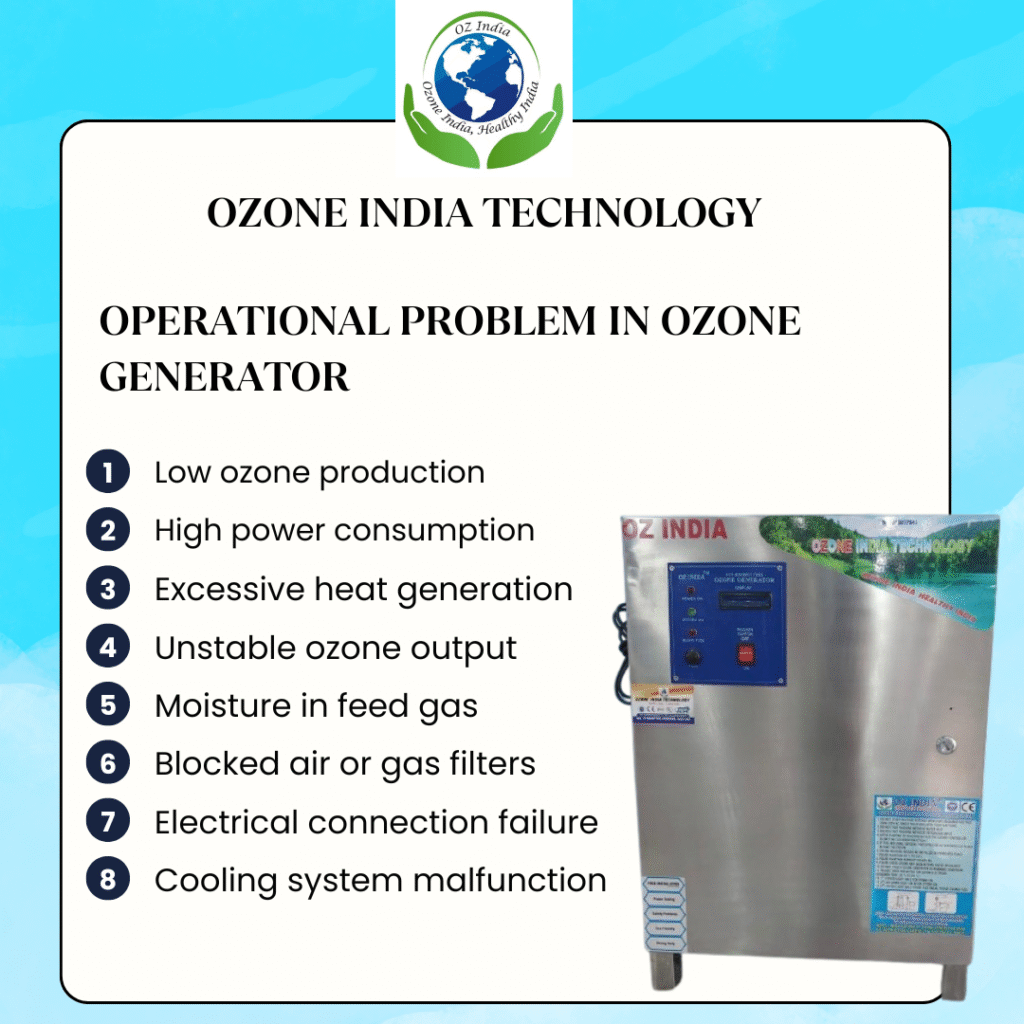
- Low Ozone Production
- Possible Cause: Poor feed gas quality (low oxygen concentration or presence of moisture) and incorrect gas flow rate are the most common reasons for low ozone generation.
- Solution:
- Ensure the feed gas (air or oxygen) is dry and pure; moisture can significantly reduce ozone output.
- Check for blockages or leaks in the gas supply line.
- Inspect the flow meter and pressure regulator to confirm proper gas flow to the generator.
- Clean or replace the air filters and ensure the oxygen concentrator or PSA system is functioning efficiently.
2. High Power Consumption
- Possible Cause: Contaminants or deposits (such as nitric acid) on the corona discharge cells increase electrical resistance, leading to excessive power use.
- Solution:
- Clean the corona discharge tubes and electrodes regularly to remove dust, oil, or acid residues.
- Ensure the cooling system is working properly, as overheating increases energy draw.
- Check for any short circuits or worn-out electrical components that might cause inefficiencies.
3. Excessive Heat Generation
- Possible Cause: Malfunctioning cooling systems or restricted water flow often cause the system to overheat.
- Solution:
- Verify that cooling water or air is circulating properly through the ozone generator.
- Clean the heat exchanger and ensure there are no obstructions in the cooling lines.
- Check the temperature sensors and cooling fans for proper operation.
- Maintain the recommended ambient temperature and ventilation in the ozone room.
4. Unstable Ozone Output
- Possible Cause: Loose electrical connections, fluctuating input voltage, or inconsistent gas flow can lead to unstable ozone production.
- Solution:
- Tighten and inspect all electrical terminals and connections.
- Use a voltage stabilizer to maintain steady input power.
- Ensure constant gas pressure and flow rate using calibrated regulators.
- Monitor and log ozone output daily to identify fluctuations early and take corrective action.
Conclusion
Installing an install an ozone generator in an STP requires careful planning, proper equipment selection, skilled installation, and ongoing maintenance. The complexity of the system demands trained personnel and strict adherence to safety protocols. When properly installed and maintained, ozone systems provide effective, environmentally friendly treatment for both water disinfection and odor control in sewage treatment plants.
Success depends on understanding the specific application requirements, selecting appropriate equipment capacity, ensuring proper installation procedures, and maintaining rigorous safety standards throughout the project lifecycle. Regular maintenance and operator training are essential for long-term system reliability and regulatory compliance.
The investment in ozone technology provides significant environmental and operational benefits, making it an increasingly popular choice for modern sewage treatment facilities in India. With proper implementation, ozone systems deliver reliable performance while meeting stringent environmental regulations and safety standards.
